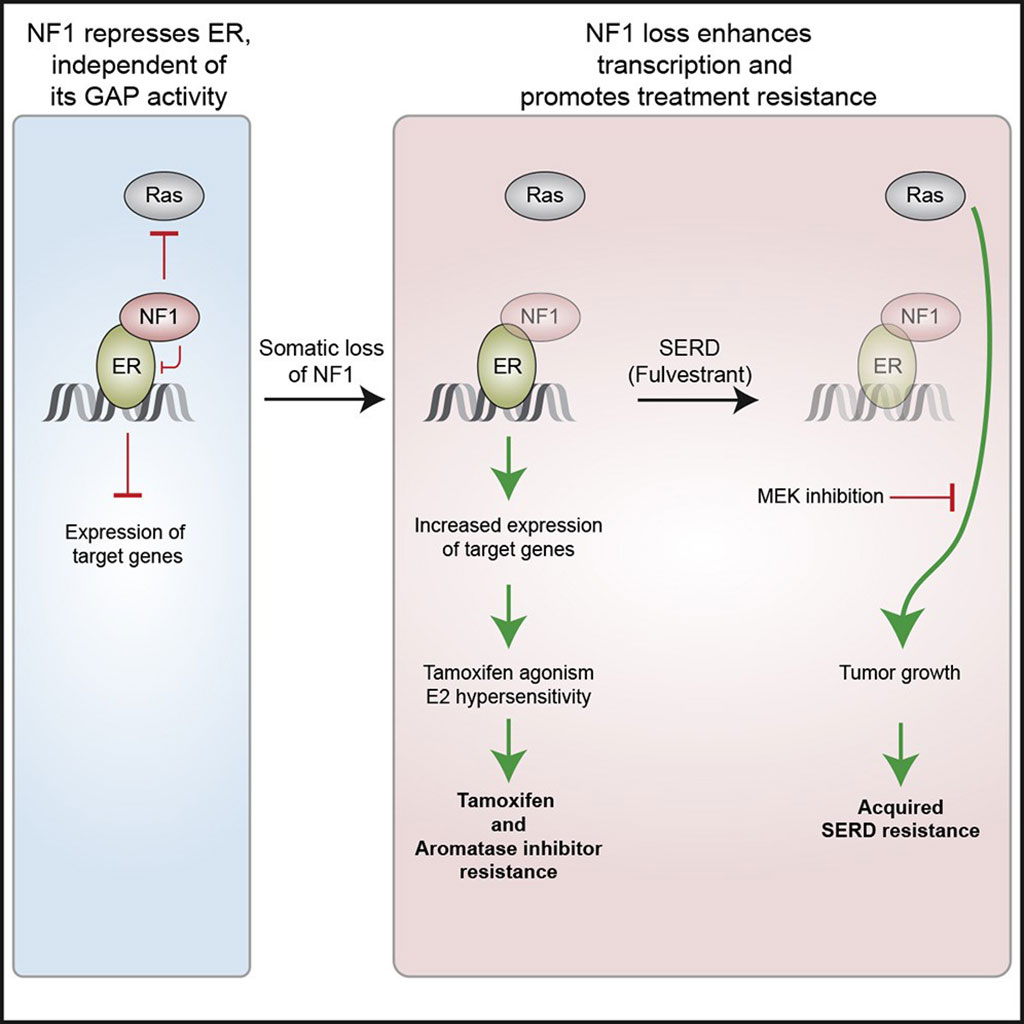Neurofibromatosis Gene and Breast Cancer Resistance to Hormone Therapy
By LabMedica International staff writers
Posted on 17 Mar 2020
The cells of estrogen receptor positive (ER+) breast cancer have receptors that allow them to use the hormone estrogen to grow. Treatment with anti-estrogen hormone (endocrine) therapy can block the growth of the cancer cells. Posted on 17 Mar 2020
Since tamoxifen or aromatase inhibitors were found to be ineffective for neurofibromin-deficent ER+ breast cancer tumors, preclinical models were used to show that the ER-degrading drug fulvestrant was still effective. However, fulvestrant only temporarily inhibited tumor growth because secondary Ras-dependent fulvestrant resistance was induced by neurofibromin-loss.

Image: Schematic diagram of Neurofibromin as an Estrogen Receptor-α Transcriptional Co-repressor in Breast Cancer (Photo courtesy of Baylor College of Medicine).
A team of Oncologists at the Baylor College of Medicine (Houston TX, USA) and their international colleagues studied the function of neurofibromin, a tumor suppressor produced by the NF1 gene. It was well known that neurofibromin keeps cancer growth in check by repressing the activity of a cancer driver called Ras. The new study reveals a previously unknown function of neurofibromin, directly repressing gene expression controlled by the estrogen receptor-α (ER). Thus, when neurofibromin is lost, Ras and ER functions are both activated, causing treatment resistance and metastasis for ER+ breast cancer.
The team reported that neurofibromin, a tumor suppressor and Ras-GAP (GTPase-activating protein), is also an estrogen receptor-α (ER) transcriptional co-repressor through leucine/isoleucine-rich motifs that are functionally independent of GAP activity. GAP activity, in turn, does not affect ER binding. Consequently, neurofibromin depletion causes estradiol hypersensitivity and tamoxifen agonism, explaining the poor prognosis associated with neurofibromin loss in endocrine therapy-treated ER+ breast cancer. Neurofibromin-deficient ER+ breast cancer cells initially retain sensitivity to selective ER degraders (SERDs). However, Ras activation does play a role in acquired SERD resistance, which can be reversed upon MEK inhibitor addition, and SERD/MEK inhibitor combinations induce tumor regression.
Matthew J. Ellis, MB, BChir, BSc., PhD, FRCP, a Professor of Medicine and a senior author of the study, said, “Neurofibromin loss is present in at least 10% of metastatic ER+ tumors. As a result of these new data, we are now working on a clinical trial that combines a MEK inhibitor, with fulvestrant.” The study was published on March 5, 2020 in the journal Cancer Cell.
Related Links:
Baylor College of Medicine














